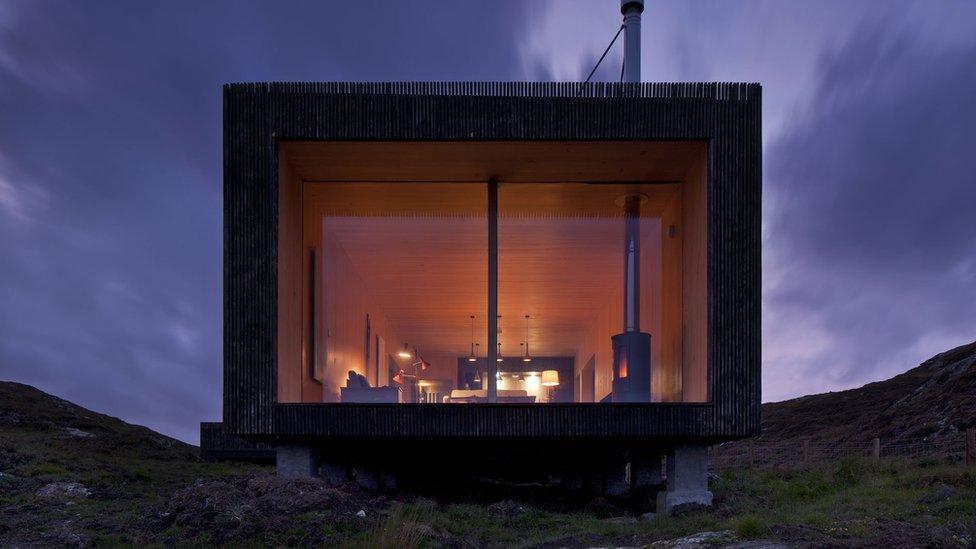In pictures: The new buildings named Scotland’s best
- Published
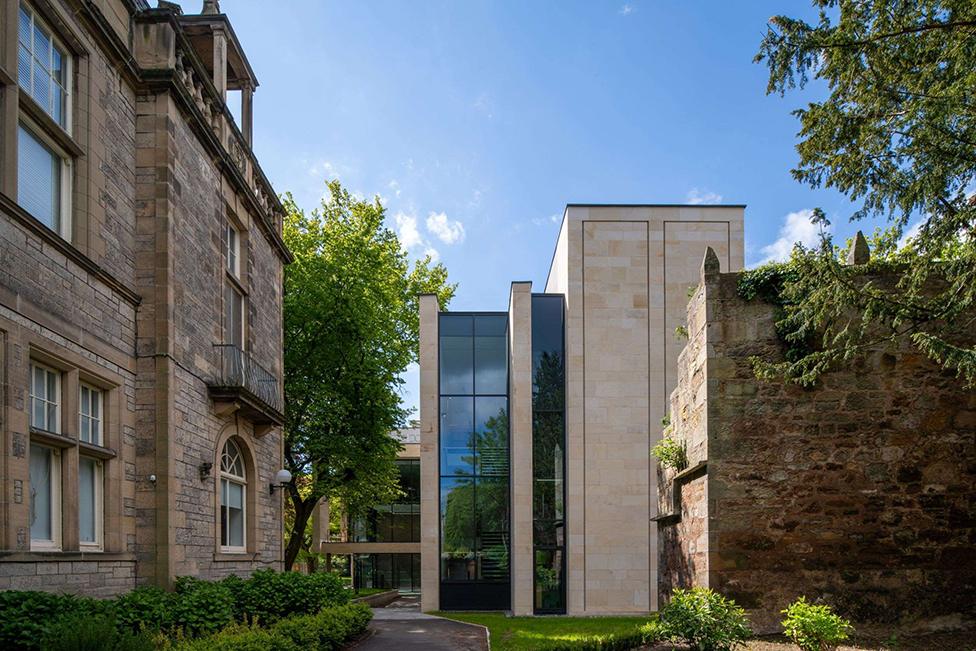
Laidlaw Music Centre is the first building dedicated to music in the University of St Andrews' 600-year history
The winners of Scotland's prestigious national architecture awards have been named.
Seven buildings which "delight and inspire" have been named by the Royal Incorporation of Architects in Scotland as winners of the 2023 RIAS Awards.
The properties include a building dedicated to music, self-build homes, an agricultural museum and a new headquarters for the home of golf.
These are the winners and why they were chosen.
Campus Central, University of Stirling, by Page\Park Architects
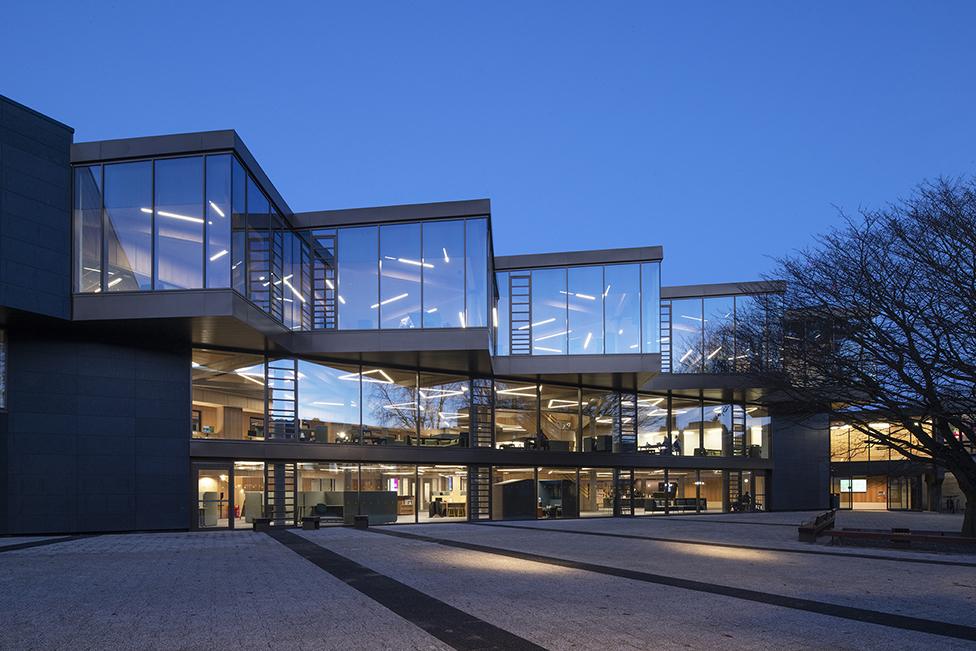
The redeveloped heart of the University of Stirling's parkland campus combines the refurbishment and extension of an existing 1970s building.
New study and learning spaces, and enhanced student support facilities help create a vibrant welcome for students and staff at the university, and for members of the pubic visiting the Macrobert Arts Centre.
Cuddymoss, North Ayrshire, by Ann Nisbet Studio
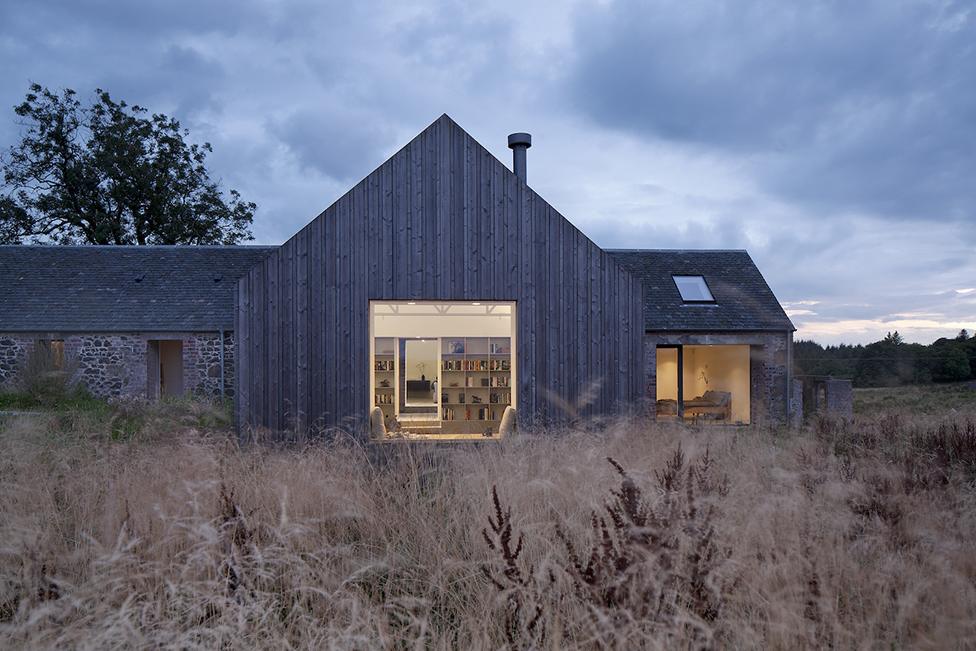
This new house is located within and around a ruined building in the Ayrshire landscape - built more than 200 years ago to house people and cattle.
Ann Nisbet Studio conceived the project as a "building within a ruin" - to bring the building back to life as a home while retaining the character of the ruin.
The ruin retains its character and relationship to the landscape. A simple timber-clad second building, connected to the ruin by a glazed link, provides additional space.
Half of Eleven, Isle of Skye by Dualchas Architects
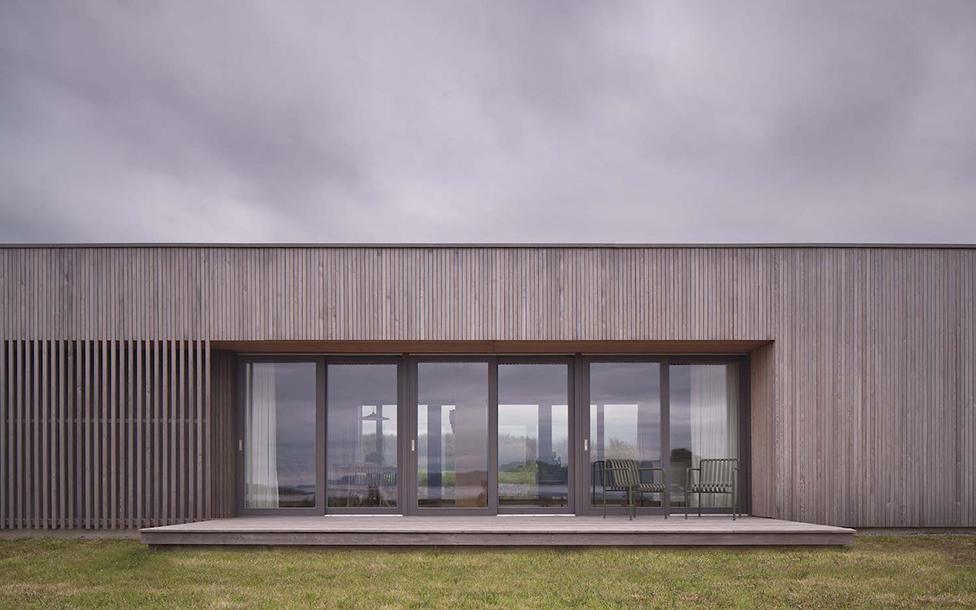
Half of Eleven was designed by Dualchas Architects as a self-build house. The owners built the house themselves as they worked to regenerate their long-held but neglected croft in Breakish, Skye.
The new house appears as a simple and unobtrusive addition to the landscape. Large windows and timber cladding allow the building to blend with its surroundings.
The extensive use of timber continues inside, bringing texture and warmth to the home's bright and airy spaces.
Hundred Acre Wood, Argyll and Bute, by Denizen Works

The residents of this family home wanted a home for themselves and their large family, whilst reflecting their personalities, which would do justice to its setting within a stunning landscape overlooking Loch Awe.
The design was inspired by Scotland's architectural heritage and the sculpture of Eduardo Chillida to produce a sense of carved solid mass which suits the exposed site.
Laidlaw Music Centre, University of St Andrews by Flanagan Lawrence
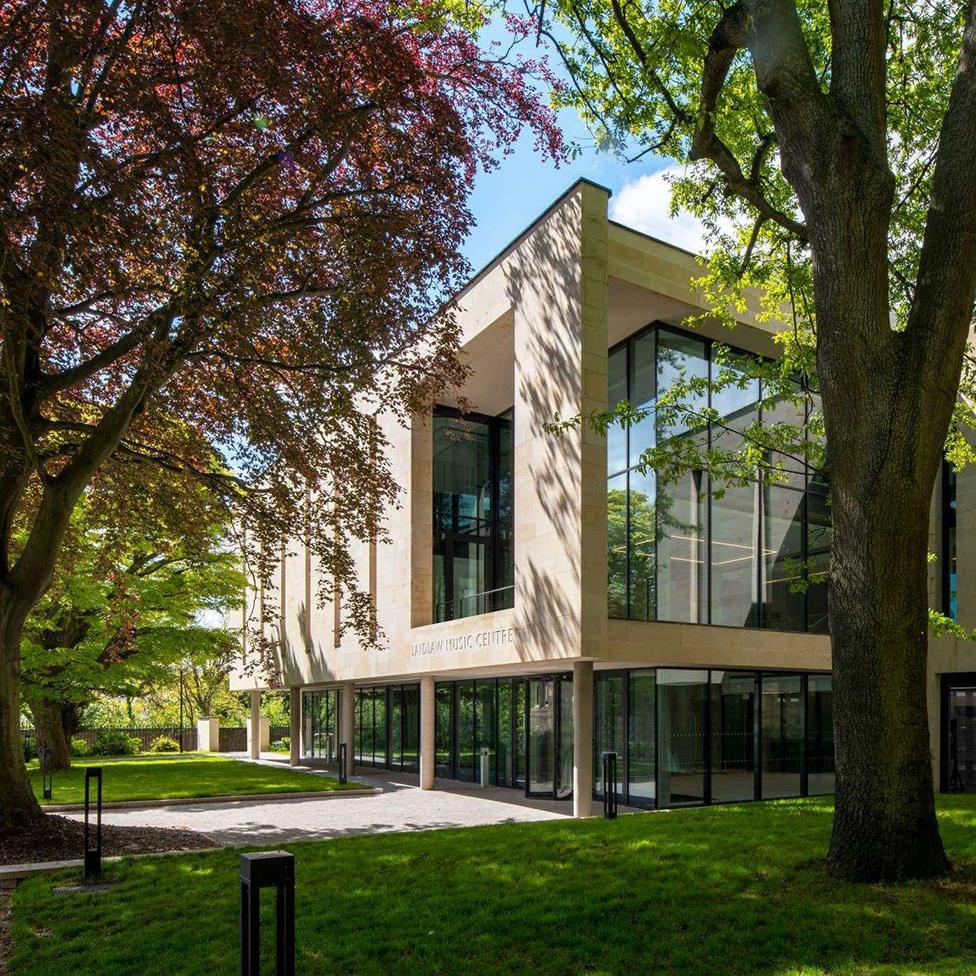
The first building dedicated to music in the University of St Andrews' 600-year history creates new opportunities for young people - including students as well as those from the local community - to connect with the performing arts.
The new building contains an intimate performing venue, flexible rehearsal space, and a high-tech recording facility, and creates a new quadrangle as an extension of the historic St Mary's Quadrangle - the oldest part of the university dating to the 16th Century.
Within its pale sandstone walls, the oak-lined recital room contains exceptional technology that allows it to be physically reconfigured and acoustically "tuned" at the touch of a button in order to suit anything from orchestral rehearsals to small-scale ensembles.
Papple Steading, East Lothian by cameronwebster architects with Ian Parsons Architect

Papple Steading was originally built in the 19th Century to house cattle, store grain and machinery.
One of the largest steadings in East Lothian, it lay derelict for years until George Mackintosh began to develop a museum to celebrate an agricultural way of life that is disappearing.
The first phase included the restoration and conversion of the original farmhouse and outbuildings into self-catering accommodation, to create income to support the development of the museum.
Pilmour House, St Andrews by Nicoll Russell Studios

St Andrews Links Trust operates the seven public golf courses that make up the home of golf.
The design of the new headquarters makes the most of its location with views of the surrounding golf courses.
Architects used sandstone masonry, commonly found in St Andrews; timber, glass, zinc and aluminium to create the pavilion-style building.
All images are subject to copyright.
- Published6 June 2022
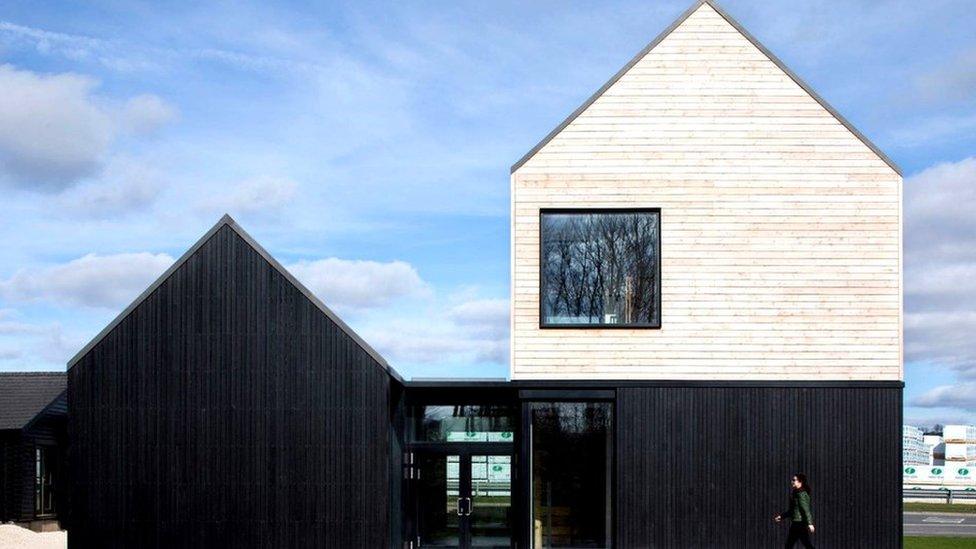
- Published2 September 2021
